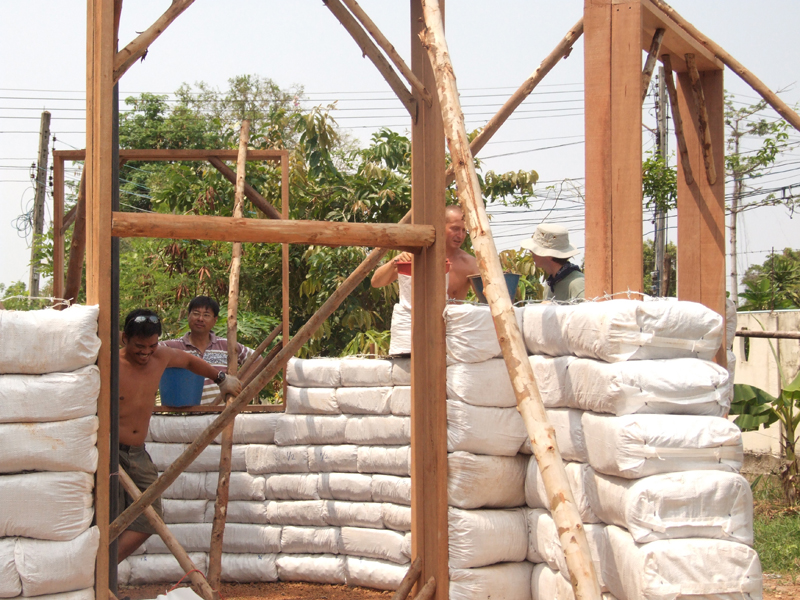
One way to save money and reduce your impact on the environment is to use unmilled roundwood when building your home. Wood in the round is much stronger than standard dimension lumber and requires less processing. In our case it enables us to use local, sustainably grown wood instead of wood shipped hundreds of miles. Plus, because we’re using eucalyptus wood our roundwood is fairly durable and insect resistant. Using roundwood does take a bit of extra work, but I feel the benefits make it well worthwhile.
We use roundwood for many purposes, including corner braces to keep window and door bucks square, braces to prevent bowing of frames, long poles to keep window and door bucks plumb, stakes and even nailers for attaching electrical junction boxes, shelving, etc.

Hi, I think these are wonderful. Recently my husband and I bought 12 acres of land on the Bay of Fundy, Nova Scotia Canada. We get moisture (lots of fog) and pretty cold winters. We do have a few Strawbale houses in the area and are considering that technique for our main house. We are wondering if some of the smaller buildings we want on the property (200′ sq) might be able to be done with earthbag style or does winter preclude this? Does anyone know if anyone has built in this type of climate? Thanks, Kim.
Earthbag building is ideal for cold and wet climates (as well as earthquake and hurricane-prone regions, etc.).
For instance, Kelly Hart built his house in Colorado with earthbags filled with scoria. This provides a superinsulated wall at low cost. http://www.earthbagbuilding.com/projects/hart.htm
Scoria and pumice are moisture and fire resistant, don’t attract pests, etc. Moist soil would freeze in cold climates, but you could build with scoria and pumice all winter. Curved designs will be the most stable.
Here’s a link to earthbag foundations in Canada: http://www.earthbagbuilding.com/projects/mpac.htm